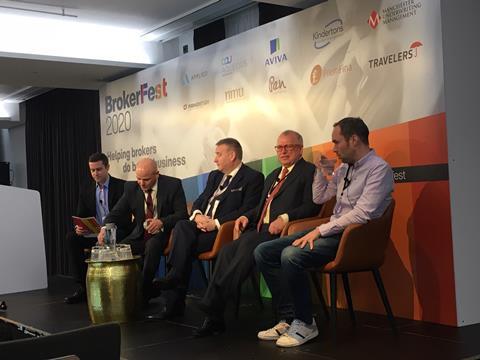The use of plain English should trump legalese and jargon where possible, but is this a viable option in the heavily regulated insurance sector?
The failure of consumers to read the small print has often been blamed for disputes over products and policies throughout the financial sector and beyond.
However, can consumers be blamed for failing to read through their policy’s terms and conditions (T&Cs)? After all, the T&Cs could be tens of thousands of words long and written in a language that is far beyond their reading ability, littered with legalese and insurance jargon?
The failure to read through them thoroughly could easily prove to be a costly decision though.
Now, as part of its 2020 ‘access’ themed manifesto, Biba has included a call to the insurance industry to make its policy wordings easier to understand.
Section 1.7 of the 2020 Biba manifesto is titled ‘Easier to understand insurance wordings’. It reads: “Even a standard travel insurance policy can contain more than 20,000 words, many of which are technical, legal and difficult to understand. Biba supports the move towards making insurance policies easier to understand through increased simplicity, use of plainer English and clearer design.
“Biba’s accredited holiday travel insurance provider DTW1991 is making the move to a plainer English wording and Biba is encouraging more providers to follow this example.”
Within its calls for action, Biba asked “for providers to adopt plainer English wordings that are simpler in form and easier for customers to understand”.
Graeme Trudgill, executive director at Biba, said: “It is about making [policy wordings] more consumer friendly. The response has been incredible. Regulators have been supportive and insurers have been supportive.
“Getting easier to understand wordings is a new thing, so we have a programme of work that includes our insurer partner meetings.
“Our members are encouraging this; they want simpler wordings for customers who are more likely to understand what they are and aren’t covered for. It is in everyone’s interest to make some progress.”
‘Incomprehensible’ documentation
According to findings from research foundation Fairer Finance, many insurance documents are only accessible to people educated to post-graduate level. The consumer rights group believes that banks and insurers need to be forced to put their documents in language and a design that helps people understand them.
It added that the industry must work harder to make policy documents no longer than they need to be. The organisation also asked why, if LV= can create a 7,000 word car insurance policy, does Endsleigh need over 30,000 words?
James Daley, managing director of Fairer Finance, said: “Almost one in six UK adults have a reading age of 11 or less, yet most documents are incomprehensible, even to those with university degrees. It’s not just about using clearer language and eliminating jargon. Clear layout, adequate spacing and font sizes – as well as use of colour and images - are all crucial to making a document approachable and accessible for customers. Fairer Finance supports this much needed Biba call for action.”
Daley added, however, that a firm regulatory hand is also required to further spur the industry into action. He continued: “We don’t believe companies will step up to the challenge of creating simple documents without some encouragement. So, we want to see the FCA making this a priority - setting a high standard and handing out fines to lazy companies that rely on complicated small print.
“The FCA rules say that all customer documents should be ‘clear, fair and not misleading’. For now, most companies don’t get close to passing that test.”
Industry strides
Fairer Finance’s own example regarding LV= shows that the industry is making progress; other insurers and brokers are already working to simplify their wordings for the benefit of policyholders.
Ageas, for example, has pledged that, “all new policies and renewals will contain better-written and more concise policy wordings”, while insurtech Lemonade has created an insurance dictionary in its efforts to make insurance “accessible to everyone”. And AXA has simplified its wordings for direct travel and home policies.
Carolyn Scott, home director at AXA, added: “We wanted [customers] to have access to information that is easy to understand and presented in a way that is convenient for them, whether on paper or online.
“That’s why we removed the jargon and, where we had to stick to a certain term, we made sure to define it in plain English. We removed duplications, so the documents are shorter. And we improved their design - for instance, we rejiggled the order in which policy components are presented so the customer can find more quickly what matters to them. The online version is digital-friendly, with links allowing the reader to instantly find a definition, or to jump between different parts without having to scroll through them.
“The information journey is punctuated with ‘important notes’, ‘what does this mean?’ boxes and ‘top tips’ with risk management advice or examples of how cover works. We worked with Fairer Finance, which assessed the reading age required to understand our travel policy documents.
“The only limit is that we need to mention certain requirements, as our industry is regulated. Our ambition is to be accessible and transparent.”
Broker input
The industry’s commitment to clearer, more concise policy wordings goes beyond personal lines.
Brokers too are taking measures to help small to medium-sized enterprise (SME) policyholders understand their policies better, including improving the design and layout of policy documents and removing jargon.
Duncan Carter, executive vice president, markets and networks at Marsh Commercial, said: “Many insurance wordings are based on tried and tested case law, which has stood the test of time, often several years. Translating these traditionally complex wordings into plain English has required collaboration with the insurance industry, brokers and insurers alike.
“Simplifying them further will warrant a more robust advisory capacity from insurance organisations. Our Resilience insurance solution for mid-size firms is a good example of our commitment to making policies simpler and easier to follow.”














































No comments yet